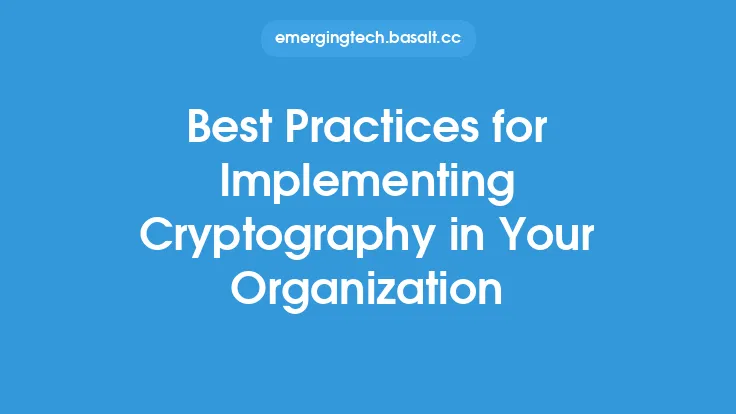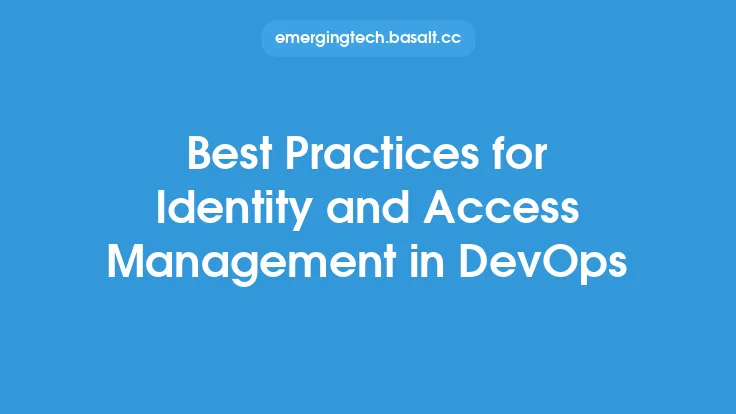Implementing serverless computing in an organization can be a complex task, requiring careful planning, execution, and management. Serverless computing offers numerous benefits, including reduced costs, increased scalability, and improved reliability, but it also presents unique challenges that must be addressed. To ensure a successful implementation, organizations should follow best practices that cover various aspects of serverless computing, from design and development to deployment and monitoring.
Design and Development Considerations
When designing and developing serverless applications, it's essential to consider the specific requirements and constraints of serverless computing. One key consideration is the choice of programming language and framework. Serverless platforms often support a limited set of languages, so it's crucial to select a language that is well-supported and has a large community of developers. Additionally, the application architecture should be designed with serverless principles in mind, such as stateless functions, event-driven processing, and loose coupling.
Another critical aspect of design and development is testing and validation. Serverless applications can be challenging to test, as they often involve complex interactions between functions, services, and events. To address this, organizations should use automated testing tools and frameworks that can simulate serverless environments and validate application behavior. Furthermore, developers should use logging and monitoring tools to track application performance, identify issues, and optimize code.
Security and Compliance
Security and compliance are top priorities when implementing serverless computing. Serverless applications often involve sensitive data and complex interactions between services, making them vulnerable to security threats. To mitigate these risks, organizations should implement robust security measures, such as encryption, access controls, and identity management. Additionally, serverless applications must comply with relevant regulations and standards, such as GDPR, HIPAA, and PCI-DSS.
One key security consideration is the use of IAM roles and permissions. Serverless functions should be assigned specific roles and permissions that limit their access to sensitive data and services. Furthermore, organizations should use secure coding practices, such as input validation and error handling, to prevent common web application vulnerabilities. Regular security audits and penetration testing can also help identify vulnerabilities and ensure compliance with security standards.
Deployment and Management
Deploying and managing serverless applications requires careful planning and execution. One key consideration is the choice of deployment strategy, such as canary releases, blue-green deployments, or rolling updates. Each strategy has its pros and cons, and the choice depends on the specific requirements of the application and the organization.
Another critical aspect of deployment and management is monitoring and logging. Serverless applications can be challenging to monitor, as they often involve complex interactions between functions and services. To address this, organizations should use monitoring tools and frameworks that can track application performance, identify issues, and provide real-time insights. Additionally, logging tools can help track errors, exceptions, and security incidents, enabling developers to quickly identify and resolve issues.
Cost Optimization and Performance
Cost optimization and performance are critical considerations when implementing serverless computing. Serverless applications can be cost-effective, but they can also lead to unexpected costs if not managed properly. To optimize costs, organizations should use cost estimation tools and frameworks that can predict costs based on application usage and traffic. Additionally, developers should use cost-effective programming languages and frameworks, such as Node.js and Python, which are often less expensive than traditional languages like Java and C#.
Another key consideration is performance optimization. Serverless applications can be slow if not optimized properly, leading to poor user experience and increased costs. To address this, organizations should use performance optimization tools and frameworks that can identify bottlenecks, optimize code, and improve application performance. Additionally, developers should use caching mechanisms, such as Redis and Memcached, to reduce latency and improve response times.
Conclusion
Implementing serverless computing in an organization requires careful planning, execution, and management. By following best practices that cover design and development, security and compliance, deployment and management, cost optimization, and performance, organizations can ensure a successful implementation and reap the benefits of serverless computing. Serverless computing offers numerous advantages, including reduced costs, increased scalability, and improved reliability, but it also presents unique challenges that must be addressed. By staying informed and up-to-date with the latest trends and best practices, organizations can unlock the full potential of serverless computing and achieve their business goals.





